
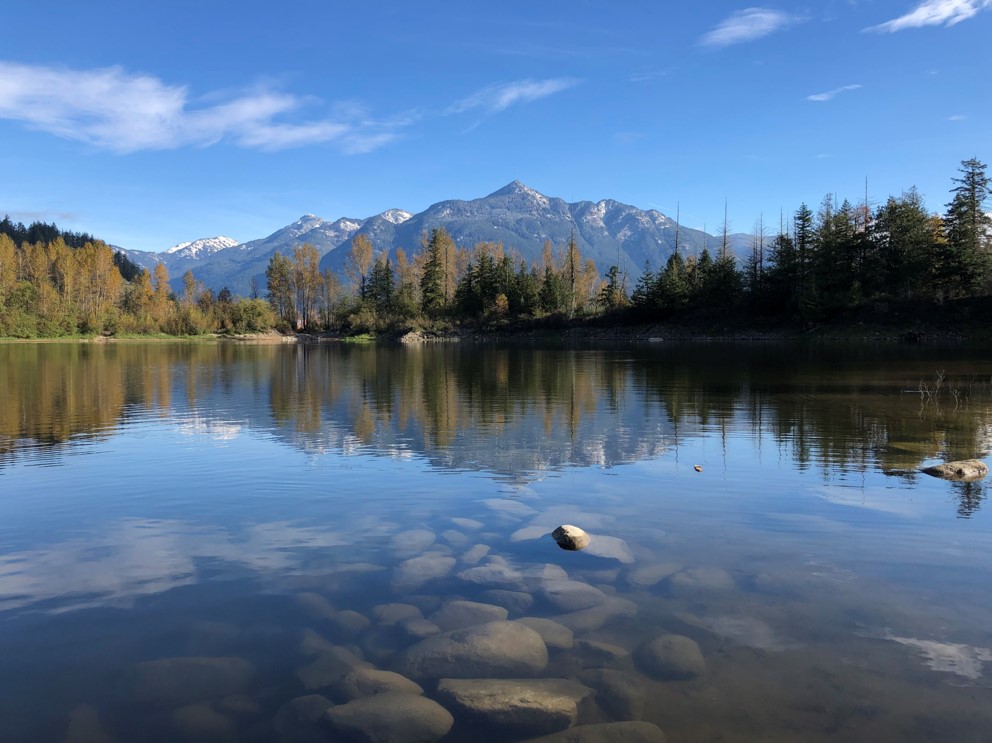
Heavy machinery will be working to restore and create salmon habitat starting September 8 to 24, 2021; followed by tree planting and bioengineering activities starting mid fall 2021 and spring 2022 . For your safety, please obey trail closures and posted safety signs.
Thank you for your patience and support as we work to transform this pit into natural off-channel habitat for salmon, waterfowl and wildlife.
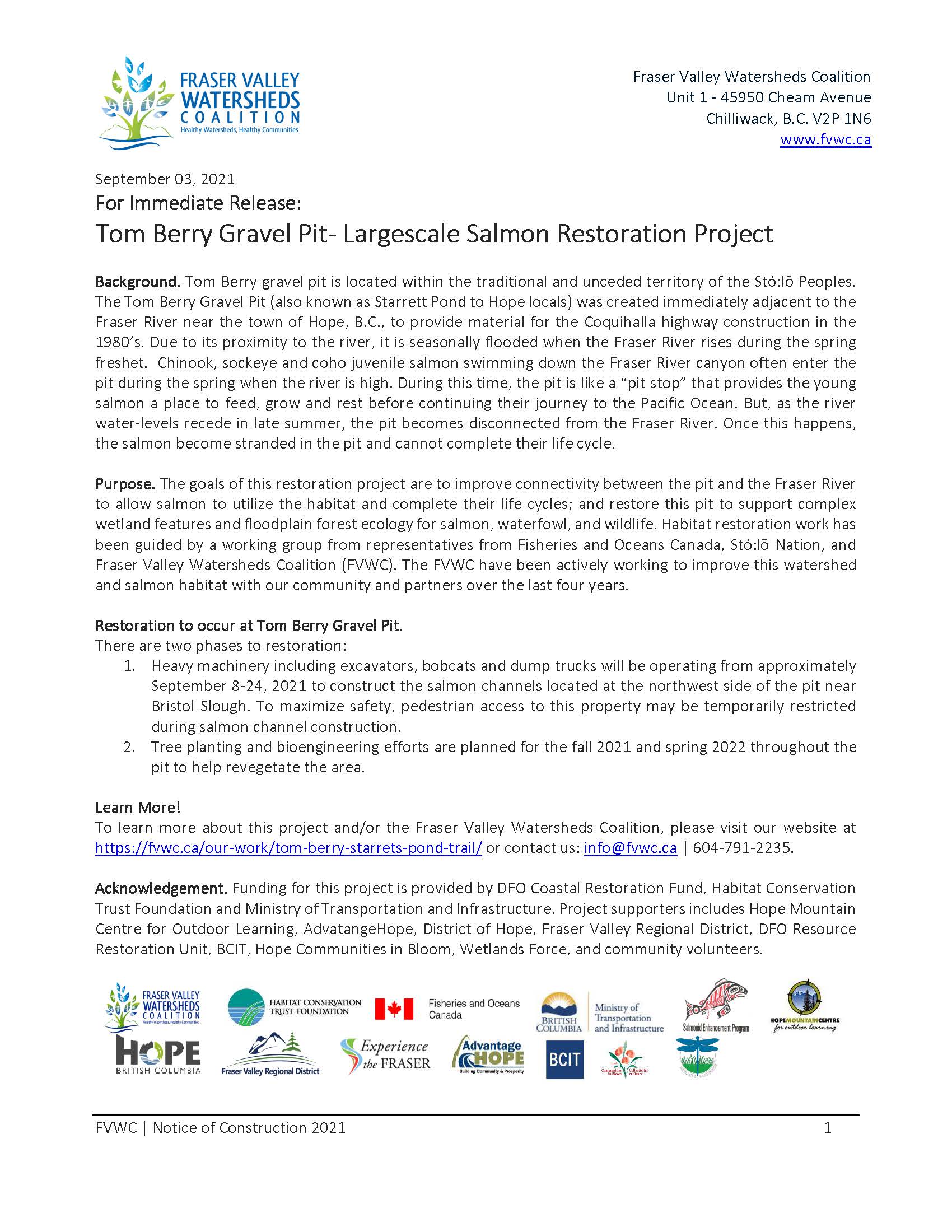
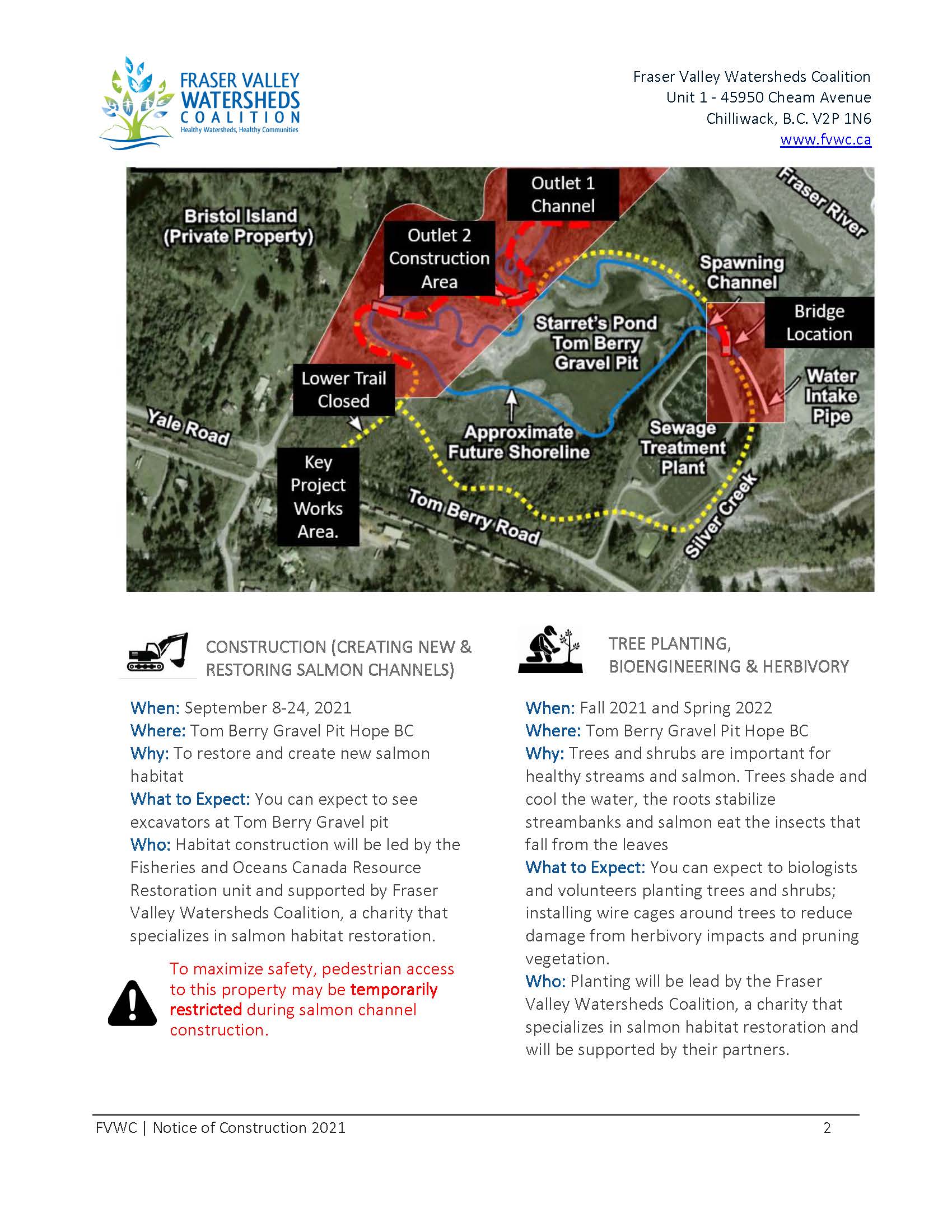
This project is a collaborative effort to enhance, restore and promote shared conservation values in the Tom Berry Gravel Pit, Hope BC. It is a continuation of work that has occurred in this region to improve the overall salmon habitat connectivity to freshwater floodplain habitats.
This restoration project began in 2017 with its primary focus on addressing the stranding of salmonids that enter the pit during the Fraser River freshet, and remain trapped when water levels recede in the late summer; with high water temperatures, low dissolved oxygen, and predation from invasive aquatic species, the aquatic conditions in the pit were not enough for salmonid survival. This project aims to restore juvenile salmon connectivity to the Fraser River and support the recovery of the southern resident orca whale population.
The Tom Berry gravel pit has been an active gravel pit for more than 40 years. Currently owned by the Ministry of Transportation and Infrastructure Finance Authority (BCTFA) it was last actively mined during the construction of the Coquihalla Highway in the 1980's. Due to heavy gravel mining the pit and surrounding area are rocky, dry, and lacking vegetation and soil structure.
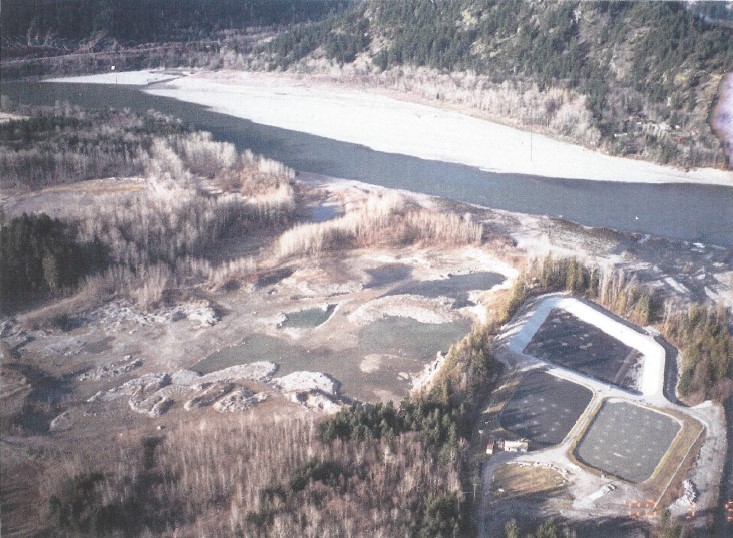
photo credit:
description: Tom Berry gravel pit circa 1976. Note the dry, rocky, and unvegetated landscape in and round the gravel pit.
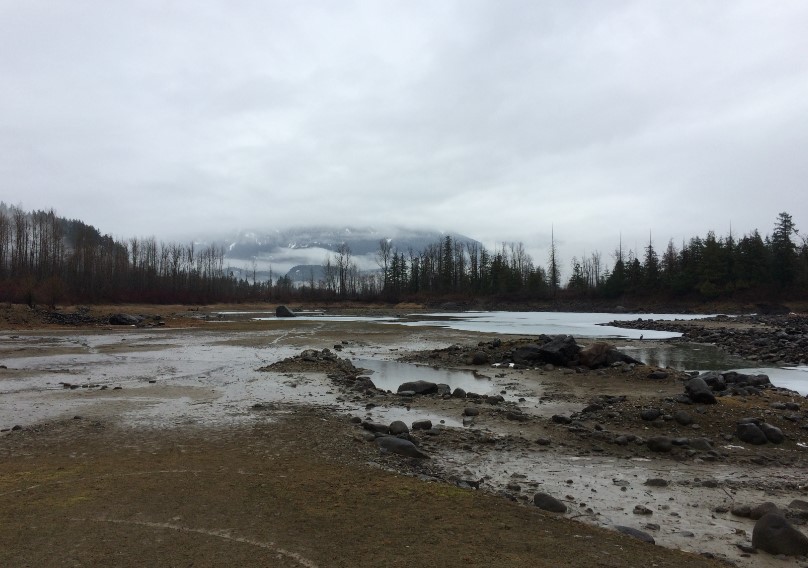
photo credit: FVWC
description: Northeastern view of the Tom Berry gravel pit in 2018 prior to restoration. Note the pockets of water in the pit and lack of vegetation surrounding the pit.
Almost every year during the spring Fraser River freshet this pit floods. During flooding the pit fills with water and fish from across British Columbia. As Fraser River water levels recede in the late summer, the pit is cut-off from the Fraser River and traps fish such as Chinook (Oncorhynchus tshawytscha), Coho (Oncorhynchus kisutch), and Sockeye (Oncorhynchus nerka) Salmon. Once disconnected from the Fraser River, in its pre-restoration state, the water quality and surrounding habitat of Tom Berry gravel pit are not adequate for the fish to survive. Any surviving salmon are preyed upon by invasive fish species such as common carp (Cyprinus carpio) and pumpkinseed (Lepomis gibbosus) who also wash in with freshet but can withstand the high temperatures and low dissolved oxygen after water levels recede.

photo credit: FVWC
description: Before restoration - dead juvenile fish observed in dried up pools within the Tom Berry Pit after Fraser River freshet water levels receded.
Starting in 2017, funded by the DFO Coastal Restoration Fund with financial support from the Province of British Columbia and the Habitat Conservation Trust Foundation, The Fraser Valley Watersheds Coalition and partners Department of Fisheries and Oceans Canada, Ministry of Transportation and Infrastucture, Stölo First Nation, District of Hope, Fraser Valley Regional District, Hope Mountain Centre for Outdoor Learning, Communities in Bloom, Advantage Hope and BCIT, started the planning and implementation of a restoration plan aimed at reconnecting the pit to the Fraser River to allow free passage of salmonids and other fish following Fraser River freshet. Additionally, reconnecting the pit to the Fraser River will restore the areas natural floodplain ecology, creating cool water for salmonids to rear, overwinter, and potentially spawn, and creating riparian habitat for other wildlife.
Restoration Design Analogy
Think of the Tom Berry gravel pit as a bathtub. The tap was created by digging a spawning channel connecting the pit to Silverhope Creek. The tap will allow a permanent inflow of water in the pit which will create cooler water temperatures and increased dissolved oxygen so that salmon can survive year-round. Two drains are being created. The main drain is a channel that will connect the Tom Berry gravel pit to Bristol Slough where salmon can travel back to the Fraser River on their journey to the ocean. The second drain is an overflow channel that will connect the pit to the Fraser River. Like the round circle overflow in a household bathroom, this channel is like a “pressure release valve” helping to control the water level in the tub. This channel will be connected to the Fraser River during freshet high flows. The tub is the open wetland centered in the middle of the gravel pit. Once the plumbing is done the bathtub will be built, and the finishing touches can be made. The banks of the pit and the new channels will be planted with native trees and shrubs including willows (Salix spp.), red-osier dogwood (Cornus sericea), and hardhack (Spirea douglasii). Trees act as natural air coolers by providing shade for fish on sunny days. They also offer places for fish and wildlife to hide from predators, and provide homes for wildlife like raptors, songbirds and insects.
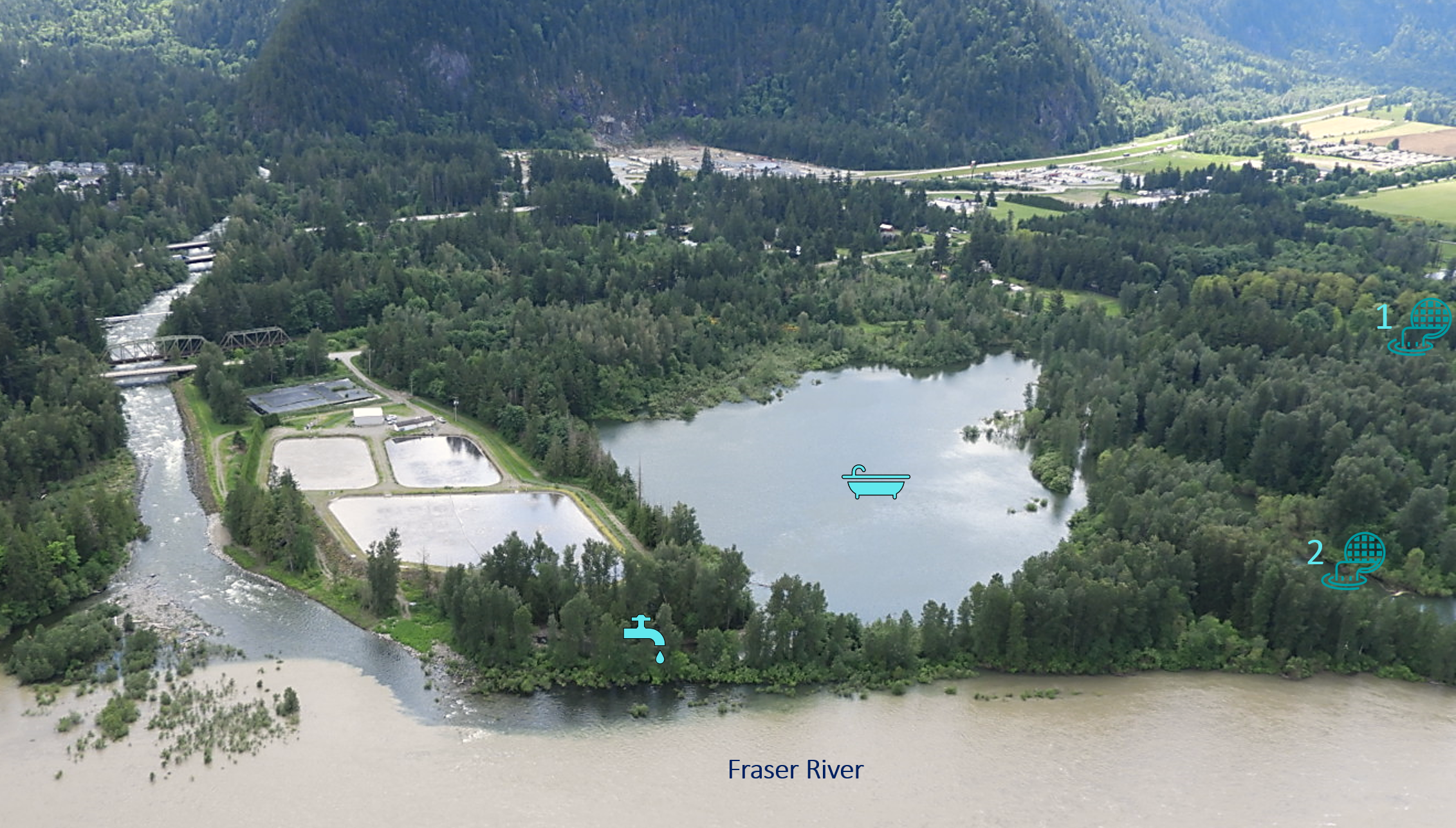
1. Planning, Assessments, and Monitoring
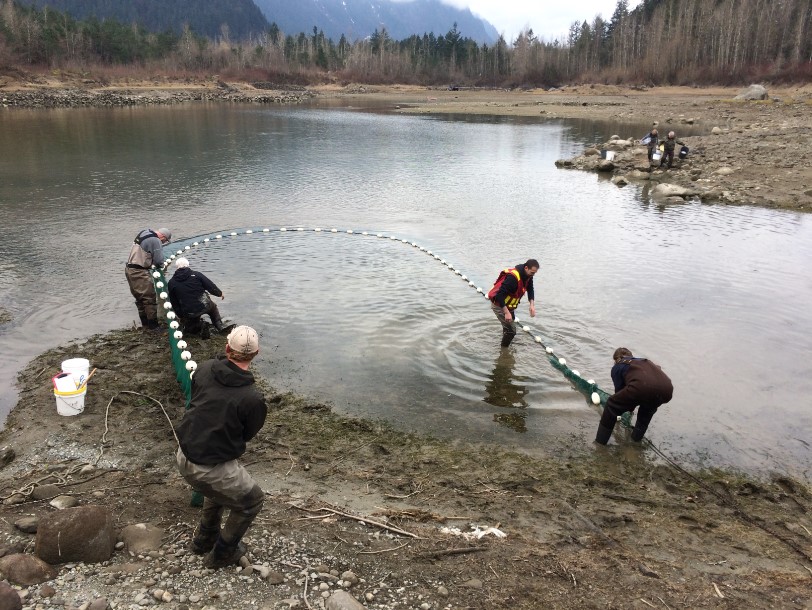
photo credit: Department of Fisheries and Oceans Canada
description: DFO completes a seine to see which fish species ae present after freshet.
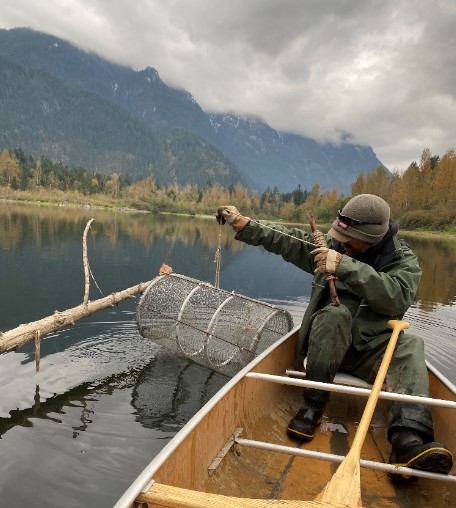
photo credit: Fraser Valley Watersheds Coalition
description: FVWC pulls a Feddes trap to check which fish species are present the gravel pit at different times of the year.

photo credit: Stó:lō Nation and Cordillera Archaeology
description: stone tools and charcoal pits found at Tom Berry during archaeological assessments. We are working closely with Stó:lō First Nation and Cordillera Archaeology to better understand the cultural significance of this site.
Summary of Activities

Gee minnow and Feddes trap data from 2019-2021 shows a total of 4,061 individual fish caught! About 0.7% of those fish were salmon with 8 Chinook, 6 Coho, and 13 rainbow trout. The most abundant species caught was the redside shiner (Richardsonius balteatus) with 2,332 individuals caught! The redside shiner is a small, native, freshwater fish found in BC.

In the summer a beach seine is completed by DFO, BCIT, and FVWC to capture a wider variety of species and sizes of fish than minnow traps. In 2019, a DNA sample was taken from all salmonids caught during the seine which found salmon at Tom Berry from 9 different geographical locations/tributaries! This found salmon from populations originating in regions such as the Thompson River, Bridge River, and Horsefly River! This highlights the importance of restoring Tom Berry as a pit stop for salmon as they travel along the salmon highway that is the Fraser River.
2. Creating the Tap, Tub, and Drain
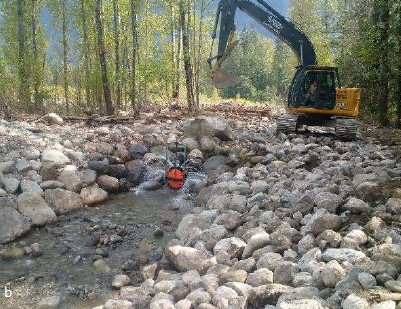
photo credit: Fraser Valley Watersheds Coalition
description: Construction of the spawning channel valve letting in water through an underground pipe connected to an intake valve in Silverhope Creek.

photo credit: Fraser Valley Watersheds Coalition
description: rock truck bringing in gravel from the pit to the spawning channel.
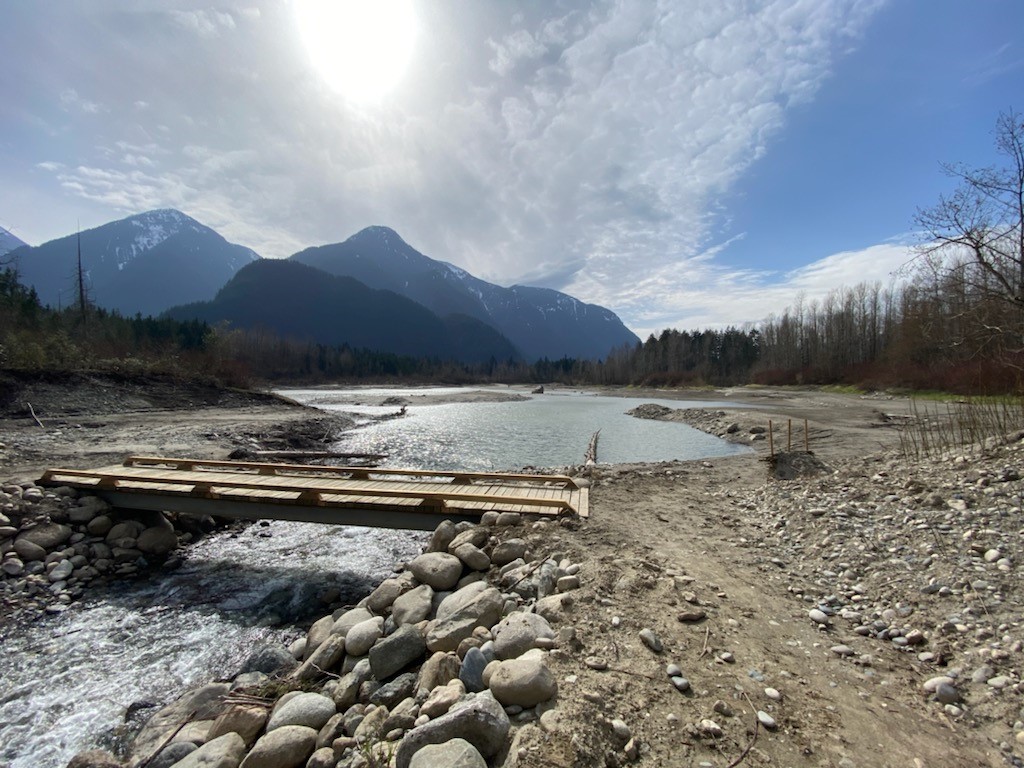
photo credit: Department of Fisheries and Oceans Canada
description: bridge over the spawning channel to connect existing trail network.
Summary of Activities
3. Riparian Planting, Bioengineering, and Invasive Plant Control
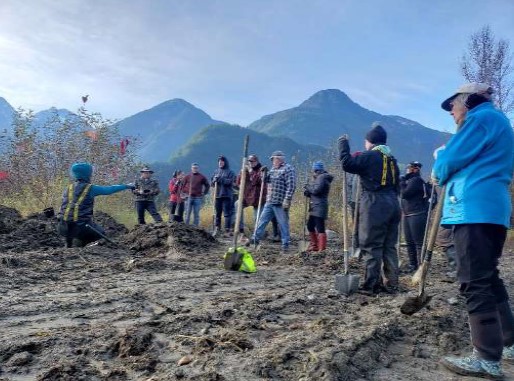
photo credit: Fraser Valley Watersheds Coalition
description: FVWC field crew supervisor, Winter Moon, teaches volunteers how to properly plant trees, shrubs, and plugs for a volunteer planting event at Tom Berry in 2019.
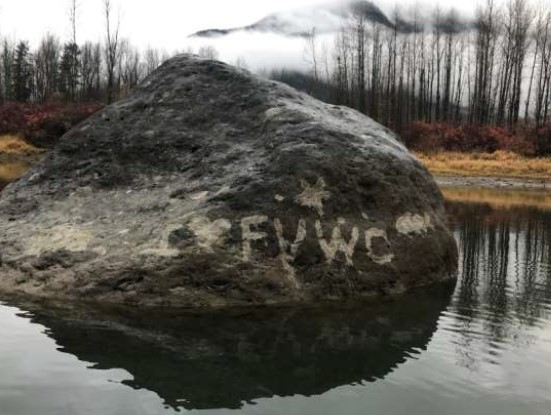
photo credit: Fraser Valley Watersheds Coalition
description: FVWC test and paint a moss mixture on the rocks in the gravel pit to try and promote moss growth to draw more insects as food source for fish.
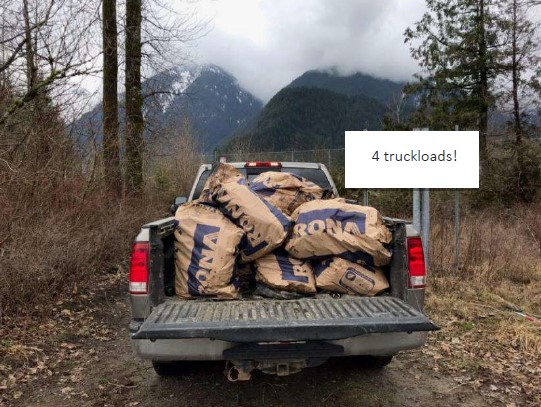
photo credit: Fraser Valley Watersheds Coalition
description: FVWC removed four truck loads of invasive sweet white clover from the Silverhope riparian planting area!
Summary of Activities


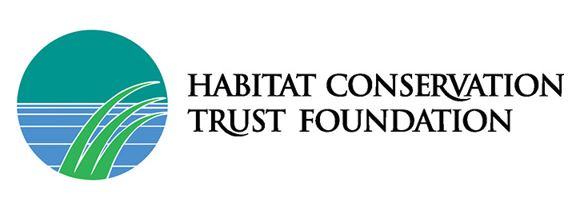

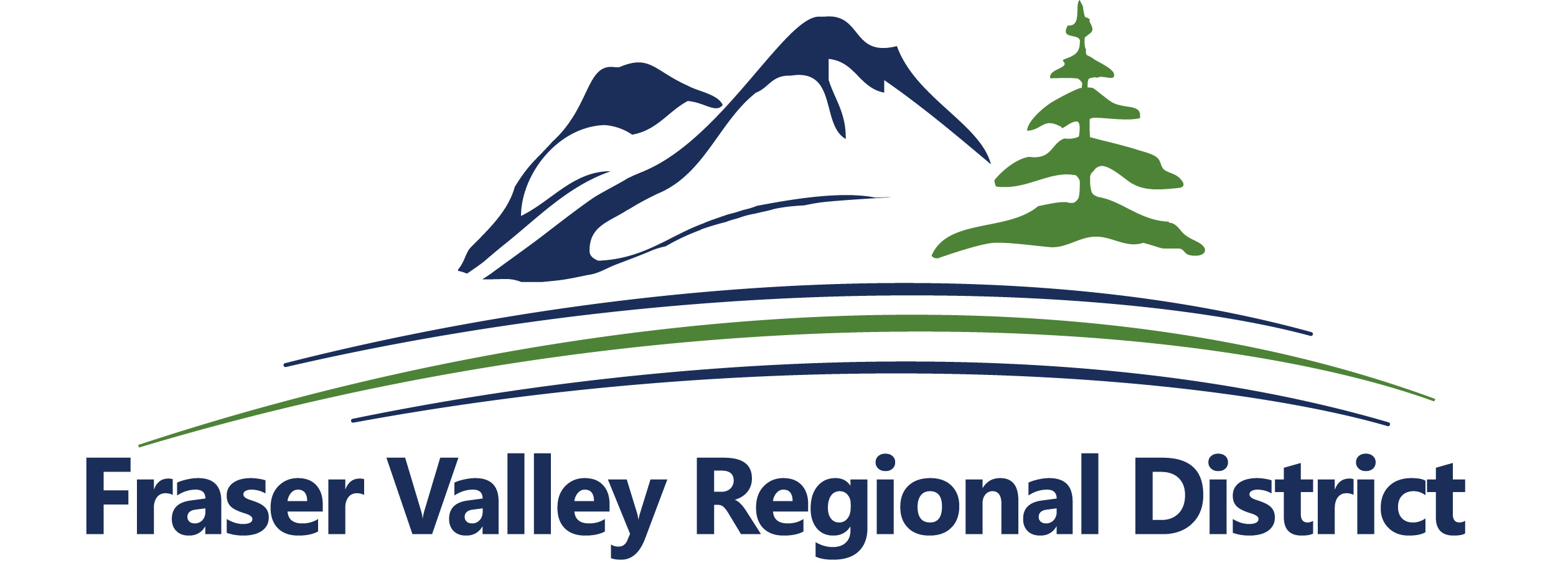












This is a block of text. Double-click this text to edit it.